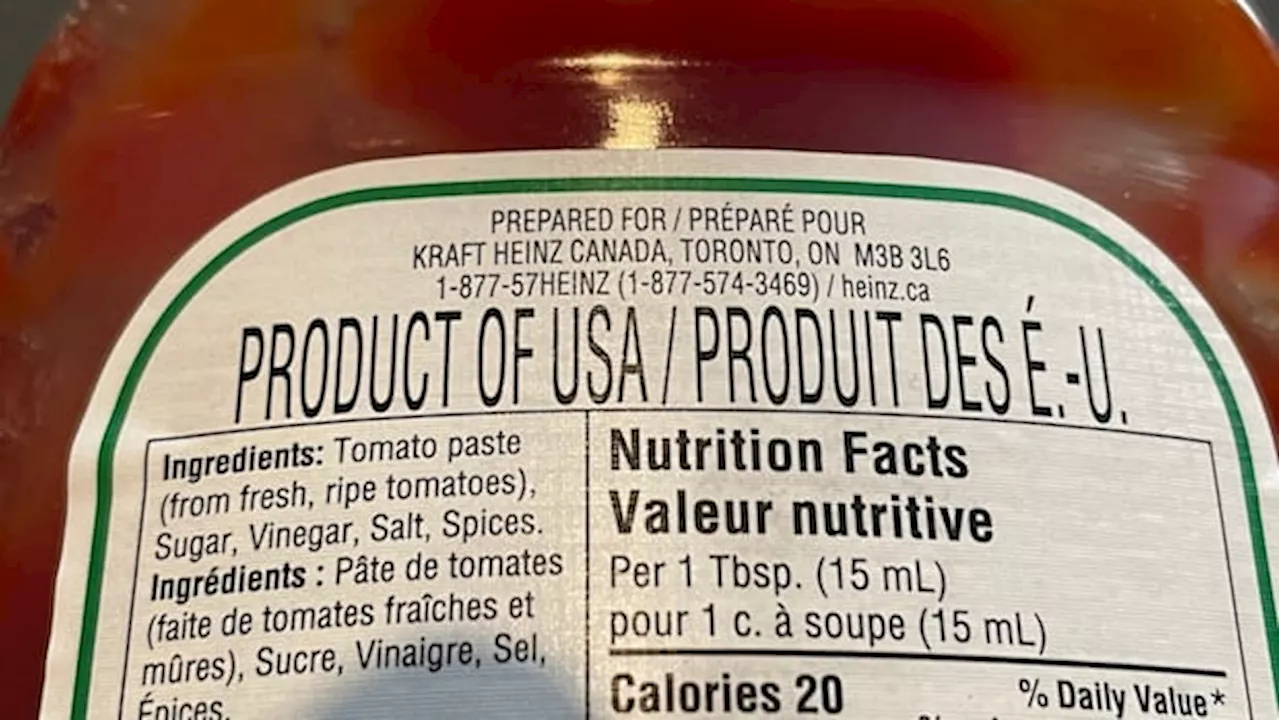With Canadian goods facing 25% tariffs from the U.S., shoppers are scrutinizing labels for their origin. This article clarifies the meanings behind 'Product of Canada', 'Made in Canada', 'Canadian', '100% Canadian', and the iconic Maple Leaf, explaining the regulations and nuances for various product categories.
TORONTO — Shoppers have been caught up in the buy Canadian fervour since U.S. President Donald Trump signed an executive order Sunday applying 25 per cent tariffs on all Canadian goods starting Tuesday.
Products with this label were grown or raised by Canadian farmers and prepared and packaged in Canada, but can contain a small amount of imported food, such as spices, additives, vitamins, and flavourings. For non-food products to use the label, the Competition Bureau says the last substantial transformation of the good must have occurred in Canada and at least 51 per cent of production or manufacturing costs must have been in the country.
The same is true for ingredients, so if"Canadian cheddar cheese" is marked on a package of cheddar cheese sauce, all or virtually all major ingredients, processing and labour used to make the cheddar cheese in the sauce must be Canadian.To use this term, the CFIA says the food or ingredient to which the claim applies must be entirely Canadian, including its processing and labour.
CANADA TARIFFS PRODUCT LABELS CANADIAN GOODS CONSUMERS MADE IN CANADA
Canada Latest News, Canada Headlines
Similar News:You can also read news stories similar to this one that we have collected from other news sources.
 Decoding the Canadian Automotive Landscape: A Province-by-Province Look at Top Vehicle SearchesThis article delves into the trends shaping the Canadian automotive market by analyzing the most popular vehicle searches across each province. From Ontario's blend of luxury and practicality to Quebec's focus on affordability and the Maritime provinces' embrace of diverse options, the article reveals insights into consumer preferences and the factors driving vehicle purchasing decisions.
Decoding the Canadian Automotive Landscape: A Province-by-Province Look at Top Vehicle SearchesThis article delves into the trends shaping the Canadian automotive market by analyzing the most popular vehicle searches across each province. From Ontario's blend of luxury and practicality to Quebec's focus on affordability and the Maritime provinces' embrace of diverse options, the article reveals insights into consumer preferences and the factors driving vehicle purchasing decisions.
Read more »
 Canadian Heinz Ketchup Bottles Spark Debate Amid 'Product of USA' LabelsJustin Trudeau's recent call to support Canadian-made products ignited a debate about Heinz ketchup after consumers discovered bottles labeled 'Product of USA'. Kraft Heinz insists its Canadian ketchup production is the norm, explaining that American bottles are shipped to Canada only during periods of high demand or for specialty varieties. The company assures consumers that Canadian tomatoes are used in its Canadian ketchup production.
Canadian Heinz Ketchup Bottles Spark Debate Amid 'Product of USA' LabelsJustin Trudeau's recent call to support Canadian-made products ignited a debate about Heinz ketchup after consumers discovered bottles labeled 'Product of USA'. Kraft Heinz insists its Canadian ketchup production is the norm, explaining that American bottles are shipped to Canada only during periods of high demand or for specialty varieties. The company assures consumers that Canadian tomatoes are used in its Canadian ketchup production.
Read more »
 Trump Hints at February Tariffs on Canadian Goods, While Canadian Politicians Back Away from Carbon PricingThis article covers several news stories from The Canadian Press. It starts with US President Donald Trump's suggestion of 25% tariffs on Canadian imports by February 1st, despite earlier indications of a study on trade practices. The article also discusses the three frontrunners in the Liberal leadership race shifting away from the Liberal government's carbon pricing policy. Other news covered includes Statistics Canada's upcoming release of December's inflation figures, thawing permafrost in the Arctic tundra, and a focus on the benefits of small care homes for long-term residents.
Trump Hints at February Tariffs on Canadian Goods, While Canadian Politicians Back Away from Carbon PricingThis article covers several news stories from The Canadian Press. It starts with US President Donald Trump's suggestion of 25% tariffs on Canadian imports by February 1st, despite earlier indications of a study on trade practices. The article also discusses the three frontrunners in the Liberal leadership race shifting away from the Liberal government's carbon pricing policy. Other news covered includes Statistics Canada's upcoming release of December's inflation figures, thawing permafrost in the Arctic tundra, and a focus on the benefits of small care homes for long-term residents.
Read more »
 Trump to Implement Tariffs on Canadian Goods, Prompting Canadian ResponseU.S. President Donald Trump's inauguration speech signaled his intention to impose tariffs on Canadian goods, reversing earlier reports that suggested a delay. Canadian officials have expressed preparedness for this move, outlining plans to defend Canadian interests and jobs.
Trump to Implement Tariffs on Canadian Goods, Prompting Canadian ResponseU.S. President Donald Trump's inauguration speech signaled his intention to impose tariffs on Canadian goods, reversing earlier reports that suggested a delay. Canadian officials have expressed preparedness for this move, outlining plans to defend Canadian interests and jobs.
Read more »
 Canadian Ministers Race to Washington to Avert Trump Tariffs on Canadian GoodsThree Canadian cabinet ministers are in Washington, D.C., making a final plea to U.S. President Donald Trump to avoid imposing harmful tariffs on Canadian imports.
Canadian Ministers Race to Washington to Avert Trump Tariffs on Canadian GoodsThree Canadian cabinet ministers are in Washington, D.C., making a final plea to U.S. President Donald Trump to avoid imposing harmful tariffs on Canadian imports.
Read more »
 Canadian Dollar Plunges Amidst US Tariffs on Canadian GoodsThe Canadian dollar continued its decline against the US dollar on Friday, driven by the anticipation of US tariffs on Canadian goods, including oil. The loonie weakened to its lowest level in nearly five years, marking its fifth consecutive month of decline.
Canadian Dollar Plunges Amidst US Tariffs on Canadian GoodsThe Canadian dollar continued its decline against the US dollar on Friday, driven by the anticipation of US tariffs on Canadian goods, including oil. The loonie weakened to its lowest level in nearly five years, marking its fifth consecutive month of decline.
Read more »
